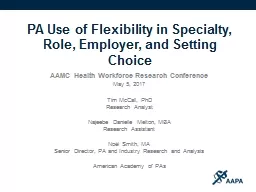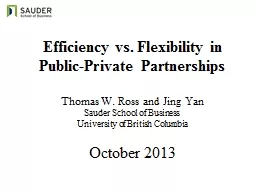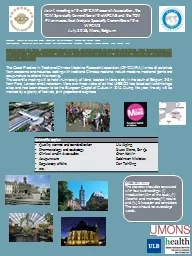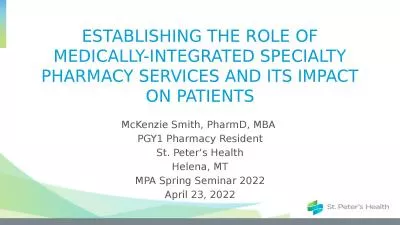PPT-PA Use of Flexibility in Specialty, Role, Employer, and Setting
Author : natalia-silvester | Published Date : 2018-11-30
Choice AAMC Health Workforce Research Conference May 5 2017 Tim McCall PhD Research Analyst Najeebe Danielle Melton MBA Research Assistant Noël Smith MA Senior
Presentation Embed Code
Download Presentation
Download Presentation The PPT/PDF document "PA Use of Flexibility in Specialty, Ro..." is the property of its rightful owner. Permission is granted to download and print the materials on this website for personal, non-commercial use only, and to display it on your personal computer provided you do not modify the materials and that you retain all copyright notices contained in the materials. By downloading content from our website, you accept the terms of this agreement.
PA Use of Flexibility in Specialty, Role, Employer, and Setting: Transcript
Download Rules Of Document
"PA Use of Flexibility in Specialty, Role, Employer, and Setting"The content belongs to its owner. You may download and print it for personal use, without modification, and keep all copyright notices. By downloading, you agree to these terms.
Related Documents














